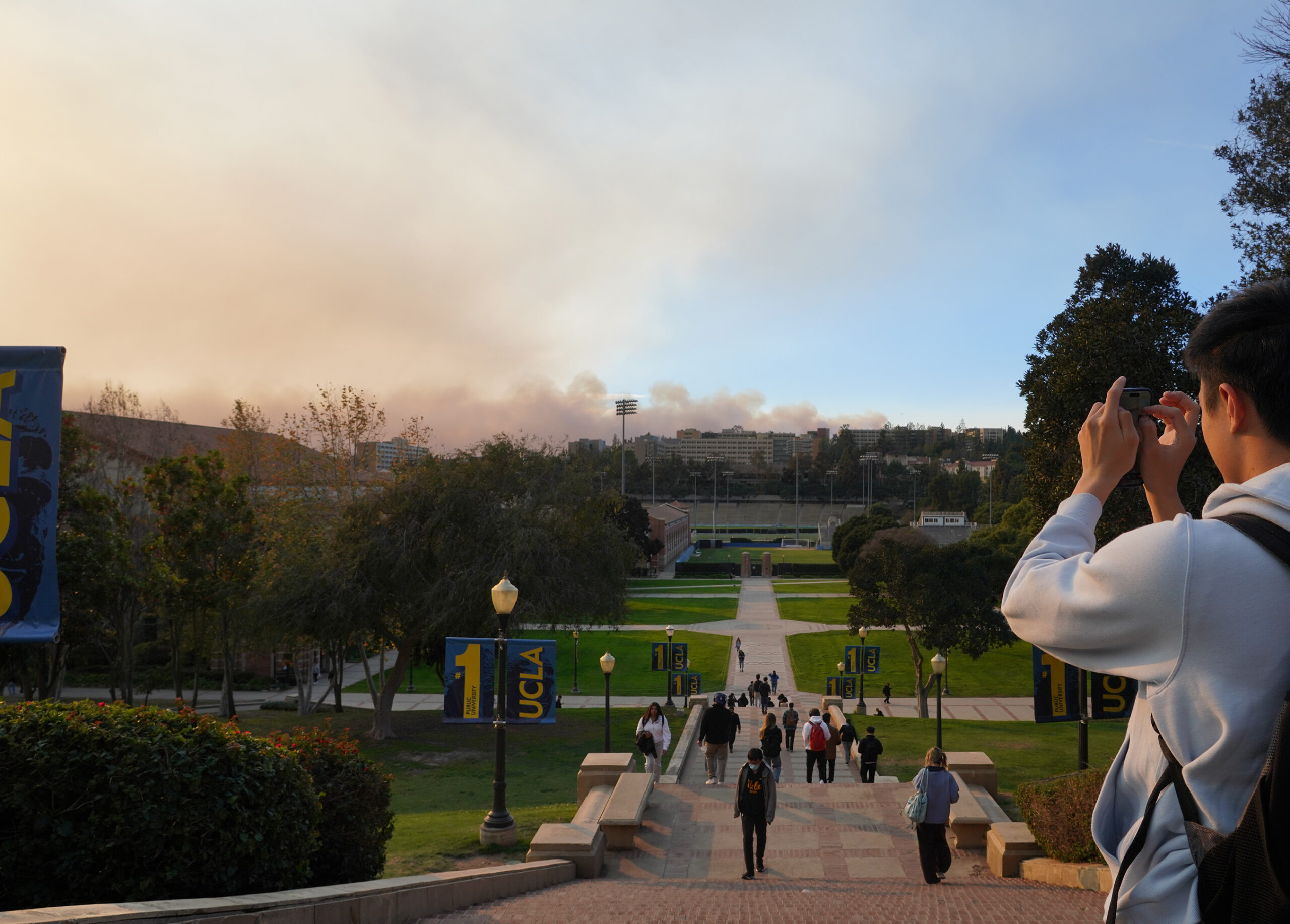Distress in the UCLA community rises as communication declines
By: Harper Dubovik
Although the state of California takes rigorous precautionary wildfire measures, no program could prepare Los Angeles for the Palisades fires on January 7th, 2025. The flames that started off as a small brush fire in the Pacific Palisades soon destroyed over 20,000 acres. As the fire spread, it inched closer and closer to UCLA’s campus. Students in their dorms could not only smell the smoke but also see the flames from their windows. As the fire got worse, so did the communication between UCLA and its community. The university’s lack of transparency endangered and incited fear into their students.
UCLA’s Westwood campus sat about 6 miles away from the Palisades fire on the evening of the 7th of January. At its most extreme, the fire came less than 1.8 miles from campus. The next day, UCLA canceled all undergraduate classes for Thursday and Friday and moved graduate classes online. The following week, all UCLA classes were online. Students became increasingly worried about their safety as fire-related conditions continued to worsen.
Although UCLA’s zone was never under evacuation warnings, many students felt the need to leave. According to the UCLA air quality website, on Wednesday morning, the day after the fires broke out, the air quality on the UCLA campus was cited as “good”. The next day, the rating deteriorated to “unhealthy.” UCLA failed to directly provide this essential information to their campus community, leaving students to rely on themselves to find updates and plan their own responses.
UCLA’s inadequate communication about the wildfires led to increased anxiety on campus. Taeya Chavies, a freshman at UCLA, reported that as of 7:24 pm Wednesday the 8th of January, UCLA had not sent out any information regarding evacuation plans for the wildfires. As a result, she was left confused and unaware of the impending danger until she could see the flames from her dorm window. As a school with over 45,000 students, UCLA had a responsibility to ensure student and faculty safety; the least they could have done was send out an email regarding all the information they knew.
While many students were able to leave the UCLA campus as soon as possible, others were not as fortunate. Ash Sundresh, a first year international student from India, felt even more distressed than some of his peers because he wasn’t sure where he would go if he was required to evacuate. For international students living at UCLA, options for where to evacuate are limited. Not only is it extremely difficult for them to get home, but they also have no prior experience with wildfires or what constitutes an adequate response.
As students coughed and wore masks during their classes on Wednesday the 8th, UCLA remained largely silent about the fire’s impact on the university community until later that evening. After classes were canceled, an estimated 5,000 students evacuated “the Hill”, where the dorms are located. Overall, UCLA’s lack of proper communication and transparency about the wildfires caused distress to students and faculty. While views of the fire could be seen from the campus, UCLA rashly continued classes as though the biggest fire in Los Angeles history was not simply blazing next door.




Leave a Reply